At CadenceSEO, we have a team of experienced writers who are experts in both writing and SEO. We also provide content marketing services, including blog posts, articles, white papers, and much more. Our team uses various techniques to ensure that your content is noticed by search engines without compromising on its quality. In this article, we will share some of our best practices that will help you write high-quality content for your website or blog using our services at CadenceSEO!
What Is SEO Writing?
In this day and age, content is king. If you want to be successful in your business, you need to have a strong content strategy. And if you want to be successful at writing content, then you need to know how to write with SEO in mind.
SEO writing is a special kind of content writing that uses keywords and phrases strategically to help search engines understand what your site is about. It’s an important part of any digital marketing strategy because it helps search engines identify your business and its products or services so that users can find them when they search online.
SEO writing is the art of writing in a way that will help your content rank on Google. It’s not about keyword stuffing or using words that are just “popular” with people, but about using language that Google understands and can use to understand what your page is about.
When you write SEO content, you’re making sure that your website has all the right keywords and phrases in the right places so that people who are looking for something like what you offer will find it when they search online. In this post, we’ll go over some tips and best practices for writing SEO-friendly content.
How to Write for SEO and Maximize Your Results
You can use keywords in your title tags and meta descriptions. It’s a good practice to include the most important keyword or phrase you want to rank for at least once in each piece of content on your site, but make sure it doesn’t sound forced. Use relevant keywords in the body of your content. Use keywords in your URLs and internal linking, as well as anchor text (the underlined text that links to another page). You should also use keywords on images and videos through alt tags (alternative text that describes an image) so Google can crawl them properly.
The Basics of Writing for SEO
When you write your content with search engines in mind, it can greatly help drive traffic to your website.
Search Engine Optimization (SEO) writing is a type of writing that is optimized to rank well in search engines. It’s a way to get your content read by more people, and it’s something that you can do without technical expertise or even knowing anything about website development.
Many people think that SEO writing means adding keywords and phrases to their content. While this can be helpful if you know what to add, it isn’t the only thing that matters. To get your content ranked well in search engines, you also need to make sure it’s engaging, helpful, and relevant to the audience you’re targeting.
The more your website is optimized for search engine results, the higher it will rank in SERPs (search engine result pages). So if you want more traffic for your site, one way to do this would be by improving its SEO with good quality content.
8 Tips For SEO Writing
SEO writing is a style of writing that is optimized for search engines. When you’re writing for the web, you’re competing with millions of other websites for a top spot on Google’s search results page. To make sure that your website gets noticed, you’ll want to focus on keyword strategy and optimized content for search engines.
Here are some tips and best practices for creating SEO-optimized content:
Write User-Orientated, Benefit-Driven Headlines
When writing headlines, your goal should always be to create a short and to-the-point headline that is both unique and relevant to the content.
The headline of your article should clearly convey the benefit for viewers so that they can quickly determine if it’s worth their time reading through the entire article. Headlines that are too long can easily confuse readers who don’t want to spend too much time reading them.
In addition, you should ensure your headline doesn’t have any spelling mistakes. Otherwise, readers might think it’s unprofessional or careless on your part as an SEO writer.
Structure Your Content Properly
You probably heard that SEO is all about content. But what does that mean? How do you ensure your content is search engine optimized? And how do you know if it’s working?
It’s not enough to write good content. You need to structure it properly, too. That’s where the magic happens—the trick is to make sure Google knows what your page is about, how relevant it is to users looking for it, and whether they should rank your page higher than others in their search results.
The next step of SEO writing is to structure your content properly. The most important factors are making sure that:
- Your title tags are clear and concise (no more than 100 characters, preferably less!)
- Your meta description tags are short and enticing (no more than 160 characters)
- The first paragraph of your page includes an answer to the question “What is this page about?”
Include Keywords in All Title Tags and Meta Descriptions
When it comes to writing content, there are a few key places to include keywords.
These include:
- Title tags and meta descriptions
Use your keywords in all title tags and meta descriptions. They’re the first thing people see when they come across your content on search engine results. Therefore, it’s important to include them so they know what kind of information they’ll find if they click through. - First 60 characters
If you have time to write more than 60 characters for each piece of content (and we recommend doing so), use this space for more keywords. This is especially true for landing pages or pieces of content that link directly back to your website, where users are likely looking for specific answers before investing in anything from you. - First 100 words
Make sure these words are included in the first 100 words as well; this gives readers an opportunity to see what their needs might be met by reading further into the article itself.(/b) - First paragraph
In addition to using keywords early on in the article itself, make sure they appear within said paragraph, but also near its end (which makes sense given how many people scan rather than read).
Length of Content Matters
When it comes to SEO content, one of the most important things you can do is make sure that your content is long enough. The length of your content should be at least 300 words, and ideally more than 1,000 words. This helps with search engine optimization (SEO) because Google likes pages with a lot of text. So if you want to get more traffic from Google searches, make sure you write long-form content!
You want to strike a good balance. If a piece of content is too long, it can be intimidating for a reader to read through and may lead them to bounce from your page. If it’s too short, it might not answer the question in its entirety and lose them as visitors. To ensure your content is effective at answering questions and retaining readers, be sure to write content that is to the point, and informational. When it comes to word count, think of quality over quantity. Get your point across, and keep moving.
Formatting Content & Using Images/Videos
Formatting is another important aspect of SEO writing. You should use bold, italics, and underlining to emphasize important points within your content. Bulleted lists (and numbered lists) are also useful for breaking up long paragraphs. Subheadings break up the body of text into smaller chunks for easy reading and comprehension.
Images and videos can also break up the lengthy text by giving readers a chance to pause and process what they’ve just read before moving on with their reading experience.
Use Best Practices When Using Images & Videos on Your Site
- Optimize images and videos for SEO.
Images can be a great source of traffic for your website, but only when they’re optimized for SEO. Make sure to include alt tags and descriptive titles in the images you upload to your site so that search engines know what each image is about.
- Use best practices when using keywords.
Use best practices when using keywords in the file names of your images, as well as their URLs (if possible), so that Google knows what they’re about when crawling through them.
- Utilize dedicated content pages.
Consider creating a separate page dedicated to each image or video so that users who are looking up an article’s topics can easily find all relevant media on one page instead of having to browse through multiple pages if there are too many media files attached under one post/page title.
Optimizing Content Across the Entire Platforms and Channels You Own
You need to think about the content you want to write and how you want your audience to consume it. Do you have a blog? What about a newsletter or email list? Are there other platforms where your audience hangs out, like Facebook groups or social media pages?
This is another reason why having an online presence is important: It’s easier for search engines and users to find all your content in one place. If you have multiple businesses or products, this becomes even more important, because each brand needs its own unique identity on the web, so users know exactly what they’re clicking into before they get there (and what they’ll see if they do).
Internal Linking & Relevant Anchor Texts to Use While Linking Internally
If you want to boost your SEO and ensure that people can find relevant content on your website, then internal linking is a great way to do it. Internal linking (also known as in-text links) is when you link to other pages within the same website.
Internal links help search engines find more keywords, discover new content, and index them for search results. They also help users navigate around a website easily by providing relevant suggestions based on what they’ve already read, which helps with user experience (UX).
A well-planned internal link strategy will improve both UX and rankings over time, because it helps search engines understand the structure of your site better than other types of links, like external links or paid ads that don’t contain any keyword information about your site’s content or products/services being advertised in those ads.
CadenceSEO SEO Writing Services
In the end, your content should speak for itself. You want people to read it, understand it, and enjoy what they’re reading.
SEO writing is about creating the right type of content that will get you ranked high in search engines and bring more traffic to your website. If you don’t know how to do this, you can hire an SEO writer who has the skills necessary to create well-written content.
CadenceSEO is a content marketing agency that specializes in creating high-quality content for your business. We offer SEO writing services, which are important for organic search rankings and conversions. To learn more about how we can help you with your online marketing strategy, contact us today!






